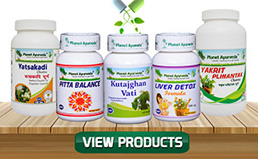Prurigo Nodularis: Symptoms, Diagnosis and Treatment Prurigo nodularis (PN): OverviewPrurigo nodularis (PN) is a skin condition which is marked by the appearance of pruritic (itchy) nodules or lesions, generally on the arms, shoulders or legs. The itchy, crusty and hard lumps appear either in few or in multiple numbers on the affected skin, and are usually caused due to scratching. Prurigo nodularis is known by some other names also, such as Picker's nodules, Hyde prurigo nodularis, lichen corneus obtusus, and unusual nodular form of neurodermatitis circumscripta. The hard lumps which characterise the Prurigo nodularis skin condition get formed on the skin which itches excessively. People affected by the condition often experience constant itchiness; and, in several cases, the itchiness continues till the lesions are scratched so much that they start paining or bleeding. The condition is actually the end result of scratching which thickens the skin nerves and stimulates them to send unusually strong 'itch' signals. The exact cause of the occurrence of Prurigo nodularis is unknown. It is also not certain whether the appearance of lumps leads to scratching of affected skin by affected individuals or whether scratching leads to the formation of lumps. Nonetheless, it is believed that this condition --- marked by the lumps, the inflammation and the increased activity and size of the skin nerves -- mostly affects people who have a personal or family history of Atopic Dermatitis, hay fever or asthma. Some of the main triggers of Prurigo nodularis include nervous conditions, mental disorders, reduced function of the liver and kidneys, and skin disorders like eczema, dermatitis herpetiformis, and bullous pemphigoid. The condition may also occur due to insect bite reaction or some other kind of skin problems. In addition, the condition is also sometimes linked to internal diseases such as iron deficiency anaemia, chronic renal failure, HIV infection, gluten enteropathy, and some other diverse disorders. Prurigo nodularis commonly affects adults in the age-group between 20 and 60 years. Symptoms of Prurigo nodularisThe most common symptom of Prurigo nodularis is the formation of itchy lumps -- with a rough and dry crusty top -- on the skin. The size of the lumps may vary from a very small size to nearly half an inch in diameter. The itchy lumps which characterise Prurigo nodularis mostly occur on the outer arms, shoulders, and legs; but, may also occur on the neck and truck. Sometimes, these lumps may also form on the palms and the face. Besides the formation of lumps, some other symptoms of Prurigo nodularis include:
Treatment of Prurigo nodularisIn Modern Science:-The treatment of Prurigo nodularis generally involves the advised use of steroids, vitamins, oral medications, corticosteroid creams, cryosurgery, thalidomide, and UVB light. In Ayurveda:-Planet Ayurveda herbal products manufacturing company offers some excellent herbal remedies for ayurvedic treatment of Prurigo nodularis in a safe, natural and effective manner. These remedies, prepared form pure and natural herbs, include: 1. Radiant Skin Hair Nail FormulaThis product, available in capsule form, is prepared from a combination of herbs which are very effective in treating skin and hair problems. The product is an excellent formulation for improving skin conditions by providing adequate nourishment to it, and also for keeping the hair and nails healthy. The herbal extracts which are used for preparing the capsules include Bhumi amla (Phyllanthus niruri), Ashwagandha (Withania somnifera), Amalaki (Emblica officinalis), Brahmi (Bacopa monnieri), Yashtimadhu (Glycerrhaza glabra), and Bhringraj (Eclipta alba). Dosage: 1-2 capsules with plain water, two times a day, after meals. 2. Aloe VitalsFor the preparation of these capsules, pure and natural extracts of 'Aloe vera' herb (Aloe barbedensis) are used. The herb is widely known in Ayurveda for its effectiveness in managing different kinds of skin conditions. People affected by Prurigo nodularis can benefit from the use of these capsules because they have an abundance of Vitamins C and E. The capsules can keep the skin hydrated, provide proper nourishment to the skin, reduce dryness of skin, alleviate redness, treat eczema, stimulate the development of skin cells, and maintain the overall health of the skin. Dosage: 1-2 capsules with plain water, twice daily, after meals. 3. Neem CapsulesThe standardized extract of the extremely beneficial 'Neem' herb (Azadirachta indica) is used for preparing these capsules. The herb is widely used for the preparation of Ayurvedic medicines for skin because of its proven anti-bacterial, anti-fungal, antioxidant and anti-inflammatory actions. The use of these capsules can enhance the beauty and health of the skin, purify the blood, nourish the skin, eliminate toxins from the body, remove excessive oil from the skin, and manage several skin diseases. Dosage: 1-2 capsules two times a day, with plain water, after meals. 4. Kanchnaar GuggulA combination of several potent herbs is used for preparing these tablets. These herbs are known for their proven properties to treat a number of skin disorders. The herbal ingredients of these tablets are also extremely beneficial in managing Prurigo nodularis. The herbs used for preparing these tablets include Guggul (Commiphora mukul), Kanchnaar (Bauhinia variegata), Amalaki (Emblica officinalis), Haritaki (Terminalia chebula), Bibhitaki (Terminalia bellerica), Guggulu Resin (Commiphora mukul), Ginger (Zingiber officinale), Varuna (Crataeva nurvala), Pippali (Piper longum), and Black pepper (Piper nigrum). Dosage: 2 tablets with plain water, two times a day, after meals. 5. Kumkumadi OilThis amazing oil is prepared from a blend of potent herbs and useful oils which are extremely beneficial for supporting skin health. This formulation is a time-tested supplement for managing skin conditions since olden times. The components of this oil include: Kesara (Crocus sativus), Chandana (Pterocarpus santalinus), Laksha (Laccifer lacca), Manjishta (Rubia cordifolia), Madhuyashtika (Glycyrrhiza glabra), Usheera (Vetiveria zizanioides), Padmaka (Prunus cerasoides), Daruhaldi (Berberis aristata), Vat (Ficus benghalensis), Pipal (Ficus religiosa), Nagkesar (Mesua ferrea), and Taila (Oil of Sesamum indicum). Method of Application: 3-5ml of the oil should be massaged over the affected skin. However, people with oily skin should avoid the use of this oil. ConclusionPlanet Ayurveda's herbal products for managing Prurigo nodularis are 100% vegetarian products which have proven effectiveness in treating skin conditions. These products do not contain any chemicals, starch, yeast, additives, colors, binders, fillers, or preservatives. |
Ayurveda Book
This book on Ayurveda is meant for people interested to know about basics concepts of Ayurvedic healing and learn ayurveda concepts. Though there are many books Read More My SitesReal Testimonials
Connect with us |












